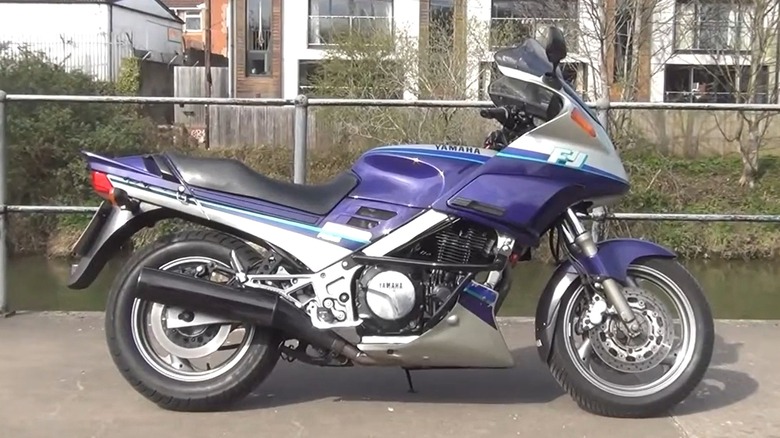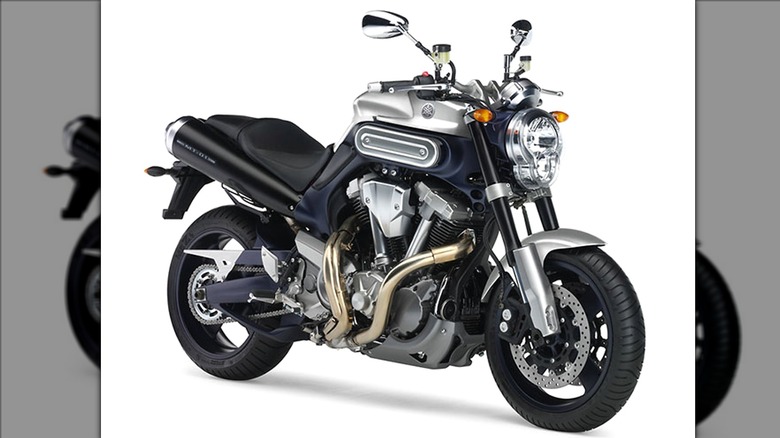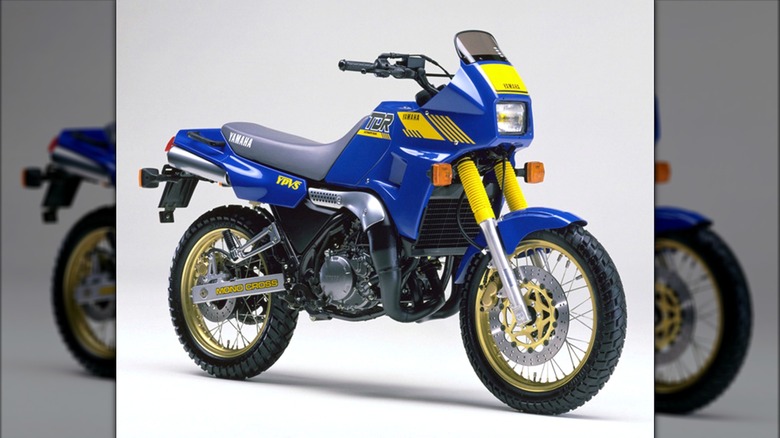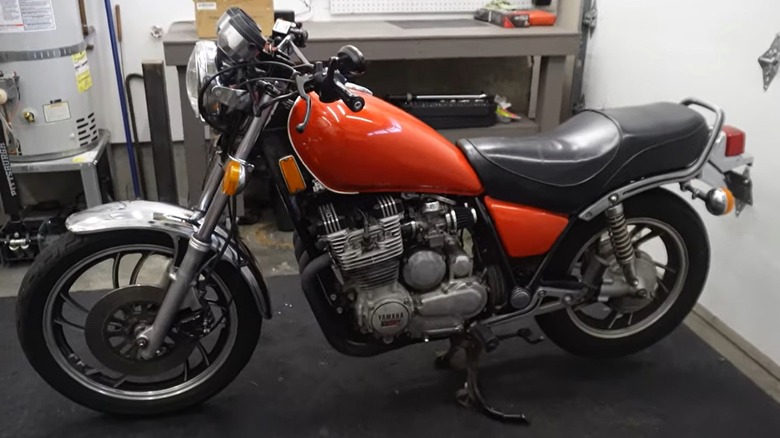5 More Underrated Yamaha Motorcycles That Deserve More Attention
You've probably heard this before, but Yamaha doesn't always get enough credit for how many great motorcycles it has built throughout its long history. Everyone knows the R1s that ruled the track, the MT series that redefined naked performance, and the Tenere line that turned adventure riding mainstream. But in between those big names were machines just as impressive — sometimes even ahead of their time, yet they never got the spotlight.
These were the bikes with real personality, clever engineering, and that kind of balance only Yamaha seems to get right. Some didn't check the boxes the market wanted, while louder releases or shifting trends simply drowned out others. Still, each one left its mark – whether it was a torque-heavy experiment, a forgotten dual-sport, or a street bike that handled better than anyone could have expected.
A while back, we covered a list of Yamaha's most overlooked gems – bikes that had performance, design, and heart, but slipped under the radar. Still, every Yamaha fan should know that narrowing that list down to just five barely scratches the surface. So if the first list reminded you of how deep Yamaha's history runs, this one digs even further.
Yamaha FJ1200
Long before "sport-touring" became a buzzword, Yamaha's FJ1200 had already lived it. Introduced in 1984, it was really fast, surprisingly refined for its age, and among the most reliable bikes in Yamaha history. The FJ1200's 1,188 cc air- and oil-cooled inline-four uses a quad carburetor setup, making the machine good for about 130 horsepower and 80 lb-ft of torque. Even then, it never felt twitchy or fragile, thanks in part to a five-speed gearbox that sent it past 150 mph when pushed to its limit. Across its production run through 1996, it evolved from the FJ1100 into a more mature long-distance performer that mixed superbike speed with everyday comfort. Yamaha also refined it into like three models, each with different updates, and by 1991, it rolled out its first bike with optional ABS — a feature that was practically futuristic back then.
In its prime, the FJ1200 rubbed shoulders with heavyweights like Kawasaki's Ninja ZX-10, Suzuki's GSX-R1100, and BMW's K100RS, and it held its own by doing things differently. What truly set it apart from the pack was that it wasn't chasing lap times like its rivals. Instead, Yamaha focused on making the FJ1200 relentlessly dependable. Examples have exceeded 100,000 miles on original internals with only routine maintenance, proving just how durable Yamaha's engineering was. Although the FJ1200 never grabbed headlines like its sportier rivals, it still helped shape the segment's future by laying the groundwork for later greats.
Yamaha MT-01
Some bikes arrive before the world is ready for them, and the Yamaha MT-01 is a perfect example. What began as the Soul Beat V-Twin-Sports concept unveiled in Tokyo back in 1999 eventually grew into something Yamaha would define through the name itself — MT, short for Master of Torque. By 2005, that vision became reality, and when the MT-01 hit showrooms, most riders didn't know what to make of it. Here was a motorcycle powered by a huge 1,670 cc air-cooled, four-stroke V-twin engine borrowed from the Warrior XV1700 and refined. With a two-bore fuel injection system, chain drive, and four valves per cylinder, it channeled about 90 horsepower and up to 111 lb-ft of torque through a five-speed gearbox. That setup was good for around 129 mph, but the real thrill really came from its smooth and deliberate power delivery.
Weighing just about 530 lbs (240 kg), it handled more lightly than its size suggested. Plus, Yamaha gave it frames and brakes straight from the R1, which meant it cornered better than most big twins of its day. Still, riders who owned one knew it was something special. Even its 2009 limited edition, dressed in Pirelli tires and a suspension from Ohlins, struggled to steal attention from Yamaha's more famous models. It never earned the recognition it deserved, but time has a way of revealing what people once overlooked. Today, enthusiasts and riders are taking a fresh view of the MT-01.
Yamaha TDR250
If you've ever wondered what happens when Yamaha mixes dirt bike grit with sport-bike energy, the TDR250 answers that question. It happens to be one of the rarest bikes Yamaha ever built, a machine that slipped quietly through the late '80s without most riders realizing how special it was. When it came through in 1988, Yamaha called it a street-legal trail bike, but it handled more like a two-stroke rocket in disguise. Plus, it redefined what a dual-sport could be in a way no one else dared at the time.
Underneath, you're looking at a 249 cc liquid-cooled parallel-twin engine complete with Yamaha's Power Valve System and digital CDI timing. It made roughly 46 horsepower and 27 lb-ft of torque, paired to a six-speed gearbox that loved to rev. Even at around 302 lbs (137 kg) dry, it could push past 105 mph while remaining planted, which made sense given its rally roots. Back then, Yamaha tested the first ever sample in the 1987 Pharaohs Rally against other major 250 cc bikes, and rider Shinji Kazama picked up the win. That victory alone proved how much potential this oddball machine carried, even before mass production began.
In addition, Yamaha's first two-stroke project included digital ignition advance, a 240 cc French variant, and parts shared with the TZR and R1-Z lineup. Sure, it had its flaws — corrosion, cracked bodywork, the occasional lazy suspension — but none of that overshadowed what it was trying to do. Today, the off-road Yamaha oddity is criminally underrated.
Yamaha FZ-07
Some bikes just get everything right without even trying too hard. The Yamaha FZ-07, or MT-07 as it's now known, is exactly that kind of bike, and really, there's not much difference between the two beyond the badge. It showed up quietly in 2015 and won riders over for being just simple, quick, and reliable, though most still underestimate how good it really is. At its core sits a 689 cc liquid-cooled, fuel-injected DOHC parallel-twin engine that feels both compact and punchy, delivering up to 75 horsepower and 50 lb-ft of torque. What really sets this one apart is Yamaha's cross-plane crankshaft design borrowed from the R1 — just like the MT-01 above — which gives the motor its distinct, uneven pulse and instant connection the moment you twist that throttle. But be careful doing that, because even a light roll on the lowest gear can lift the FZ-07.
Despite its playful nature, the FZ-07 is approachable for just about anyone. Its six-speed gearbox shifts cleanly, and the bike's 397 lb (180 kg) wet weight and 31.7-inch seat height make it easy to handle in traffic or tight corners. Plus, the LCD display, R6-style seat, and 58-mpg fuel efficiency rating help tie everything together. Maybe that's why it's so easy to overlook the FZ-07.
Yamaha XJ650 Maxim
If you've ever wondered where Yamaha's smooth four-cylinder legacy really began, the story leads straight to the XJ650. Introduced in 1980, this machine marked Yamaha's first real leap into four-stroke and four-cylinder engineering. Plus, its DNA is what started everything from the XJ750 and XJ400 to today's XJR1300. The XJ650 Maxim, aimed at the American market, added cruiser flair without losing Yamaha's sporty edge. A 653 cc air-cooled engine claimed to generate about 71 horsepower and 42 lb-ft of torque, thanks in part to four Hitachi carburetors. Power traveled to the wheel via a five-speed gearbox with a wet multi-plate clutch to a shaft drive, giving it smooth, almost maintenance-free performance while retaining a refined feel for the road.
For its time, the XJ650 was impressively light on its feet. Yamaha's engineers kept it compact by cleverly relocating the alternator above the gearbox rather than at the end of the crank, which slimmed the profile and made the bike easier to maneuver. It is one of those bikes you could throw into a bend and trust completely. Weighing 450 pounds when fully loaded, with a seat height of 29.3 inches, it was approachable for nearly any rider. It might not have been a full super-sport, but at a max speed of 120 mph, it handled itself like one.
Methodology
For this list, we went after Yamahas that didn't make the earlier SlashGear roundup, so nothing here repeats. The goal was simple: Find bikes that had the right mix of performance, reliability, and personality yet somehow missed their moment in the spotlight. We examined the specs and evolutionary traits of each motorcycle and checked in with riders who appreciated them long before the rest of the world caught on.
To keep things accurate, we dug through Yamaha's own archives, cross-checked factory data, and pulled insight from respected sources like Cycle World, Motorcycle Specs, and Motorcycle News. These helped build a clearer picture of how each bike performed, what made it special, and how it stacked up against its rivals at the time.
We also factored in how much value each model offered for its price, how critics and owners responded when it launched, and what led it to fade into the background over the years. Some of these bikes were simply ahead of their time, while others never fit neatly into the trends of their era. Still, every one of them earned its spot here the hard way by being far better than most riders ever realized.






